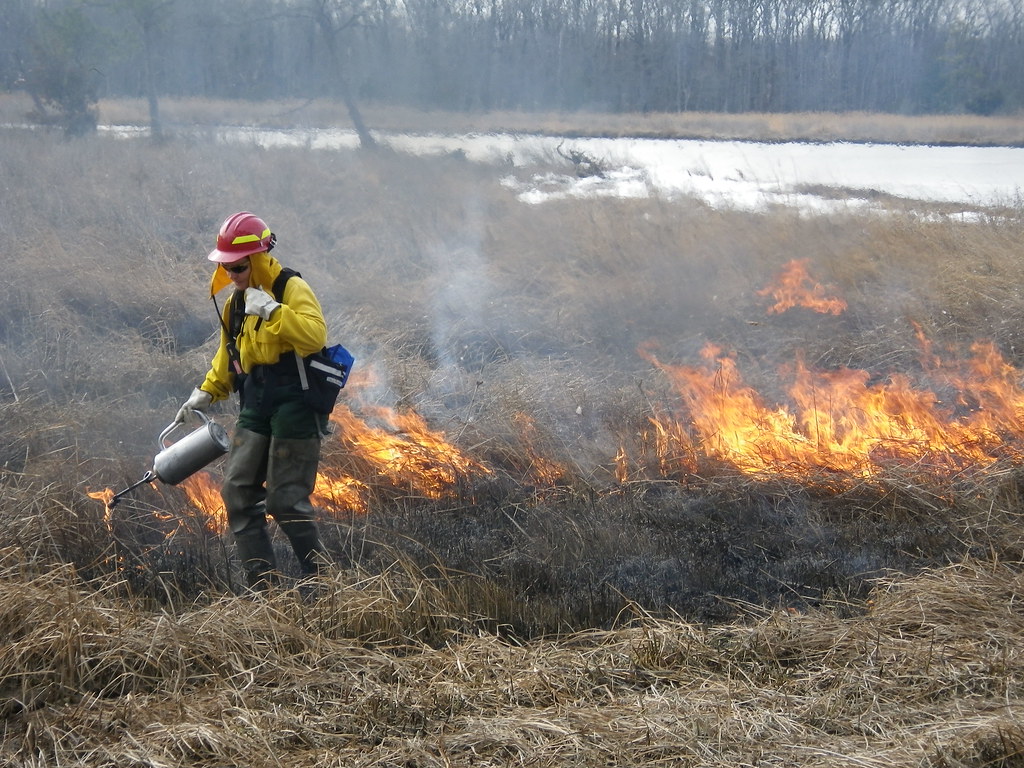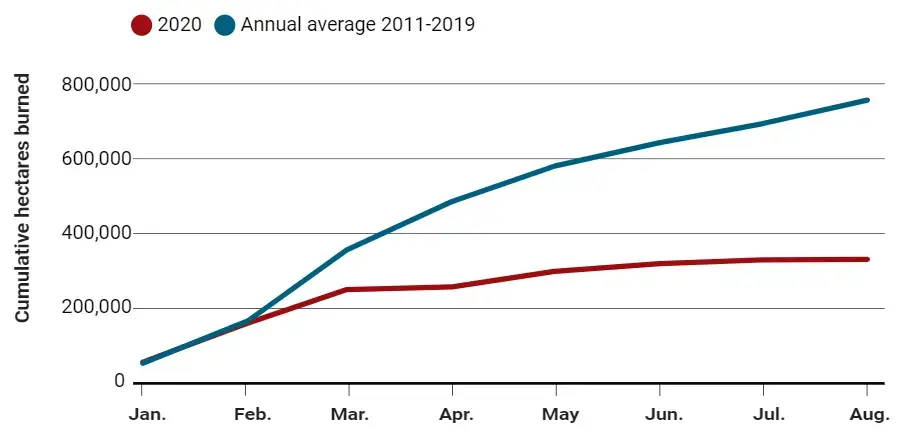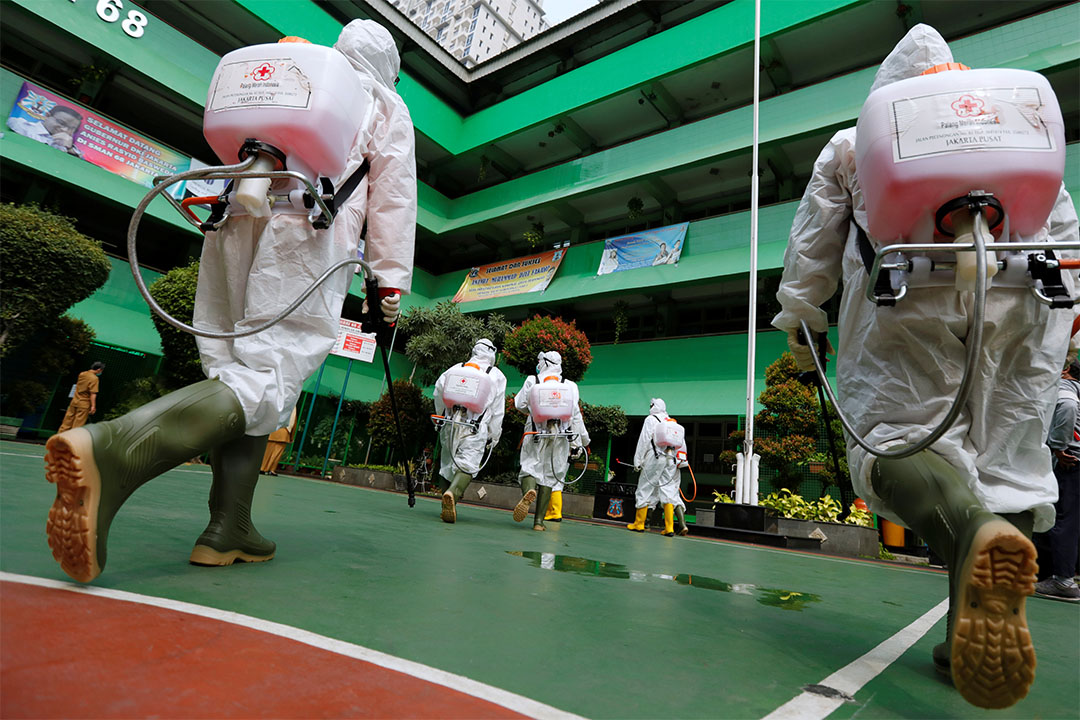
In October, if Roger Ottmar gets his wish, workers will set fire to nearly 500 hectares of dense woodland in southwestern Utah. But COVID-19 may get in the way.
Ottmar, a research forester with the U.S. Forest Service’s Pacific Northwest Research Station, is lead investigator for the Fire and Smoke Model Evaluation Experiment (FASMEE). The experiment is an ambitious effort involving dozens of scientists from across the country. Equipped with light detection and ranging sensors, radar, satellites, and drones—along with flamethrowers to kindle blazes—they study how wildfires are born and evolve. These are increasingly urgent questions given the historic fires now sweeping across the western United States that have charred millions of hectares, killed more than a dozen people, and forced hundreds of thousands of people from their homes.
But before the FASMEE can ignite, it needs a burn approval from the local agency responsible for air quality control. And although obtaining permission to intentionally light a forest on fire is never easy—whether for scientific projects or more routine “prescribed burns” to clear forests of flammable brush—this year, Ottmar and others are facing additional hurdles amid the pandemic. Across the country, state and regional regulators are downsizing, delaying, or outright canceling intentional burns, in part out of fear that the air pollution they produce could worsen the coronavirus pandemic. As a result, the area intentionally burned in the United States has declined dramatically this year, according to a new analysis by a team led by ecosystem scientist Benjamin Poulter of NASA's Goddard Space Flight Center (see graph, below).
“People are making an understandable trade-off, opting for certainty right now by reducing small exposures” to fire-related pollution, says Toddi Steelman, president of the International Association of Wildland Fire, a group that represents wildfire experts from across academic disciplines. Still, fire researchers and land managers fear the pandemic-related delays could have future consequences. Lands that don’t get prescribed burns now to reduce fire risks could face bigger blazes later, they note. Disruptions to research could also slow the flow of hard-to-collect data, says ecologist Adam Watts of the Desert Research Institute, who is a co-leader of the FASMEE.
COVID-19 Fears Snuff Out Burns
Ottmar says he likely won’t know until next month whether the FASMEE will receive approval to burn a swath of forest near the Annabella Reservoir. But officials in many states have already moved to clamp down on intentional burns.
In some cases, unusually hot, dry conditions have led some agencies to suspend permitting, for fear that prescribed burns will race out of control. But officials have also been leery of sending firefighters and researchers into the field, where they could be at greater risk of being infected by the coronavirus. Adding to the concerns is an expanding body of evidence suggesting air pollution can increase the risk that people contract COVID-19 and suffer from severe symptoms.

In North Carolina, for instance, the state’s Forest Service has reduced burns to minimize the “risk to local residents from smoke that may cause them to become more susceptible to COVID or have a worse case of COVID if they contract it,” says Cabe Speary, an agency forester. Montana delayed or canceled burns to “minimize smoke impacts on communities … [and] sensitive groups, including those with or at higher risk of contracting COVID-19,” according to Rebecca Harbage, public policy director for the state’s Department of Environmental Quality. In Arizona, 76% fewer permits were granted from March to September this year compared with last, particularly out of concern for the impact on poor air quality on vulnerable groups.
Alabama, Mississippi, and South Carolina have also banned burns, marking the second year in a row that prescribed fires have faced disruptions in these states. Last year, a federal budget dispute that led to a partial government shutdown forced the cancellation of many burns, “and now we’ve lost 2020 to COVID,” says Morgan Varner, a fire ecologist at Tall Timbers, a nonprofit research station focused on land conservation in the rural southeast. “It’s all just building up,” Varner says in reference to accumulating brush that can act as tinder for wildfires. “We’ll be playing catch-up into the future.”
In California, Oregon, and Washington state the U.S. Forest Service halted scheduled burns for weeks beginning in March, even before the current epic wildfires. At the time, agency officials noted that smoke from the burns could “further worsen conditions for those who are at risk [of COVID-19] in our communities.” (Some areas in these states have since resumed prescribed burns, in part to contain wildfires.)
“Double Jeopardy”
Smoke could also lead to more severe outcomes in those with COVID-19, Morello-Frosch says. For example, microscopic smoke particles could prompt dysfunction of white blood cells in the lung or inflammation in the bloodstream, leading to lethal blood clots. (During the severe acute respiratory syndrome epidemic, researchers note, exposure to air pollution with characteristics resembling wildfire smoke led to worse outcomes.)
An April study found that each microgram increase in fine particulate matter per cubic meter of air worsened COVID-19 outcome death rates in the United States by 8%. The findings mirrored observations from England, Italy, and China demonstrating the effects of air pollution on COVID-19 morbidity. (These studies looked at air pollution generally, not wildfire smoke specifically.)
Vulnerable populations, such as those with pre-existing conditions, the elderly, pregnant women, and racial/ethnic minorities, may face amplified risks, Morello-Frosch says.
“I’m a Prime Candidate …”
Those enhanced risks are now very real for Terry Holliday. On 17 August, after one of the 350 fires ignited by 7000 lightning strikes in Northern California overnight encircled his home in Ben Lomond, California, Holliday fled to a nearby tent shelter at the Santa Cruz fairgrounds. Hundreds of other people joined him.
After decades of smoking and heart problems, Holliday relies on a portable oxygen supply to breathe. That makes it hard to wear a mask: If he does, he can’t keep the oxygen tubes in his nostrils, or effectively exhale the toxic carbon dioxide that accumulates in his lungs. And it’s been difficult to remain distant from other people at the crowded fairground: The flame-resistant tents abut one another, and the children of evacuated families toddle between them. Meanwhile, smoke enveloping the fairgrounds has made it even harder for him to breathe.
As a result, he fears contracting the coronavirus, and what might happen if he does. “I’m scared,” Holliday says. “I’m a prime candidate to get it bad, any way you slice it.”
COVID-19 Update: The connection between local and global issues–the Pulitzer Center's long standing mantra–has, sadly, never been more evident. We are uniquely positioned to serve the journalists, news media organizations, schools and universities we partner with by continuing to advance our core mission: enabling great journalism and education about underreported and systemic issues that resonate now–and continue to have relevance in times ahead. We believe that this is a moment for decisive action. Learn more about the steps we are taking.








